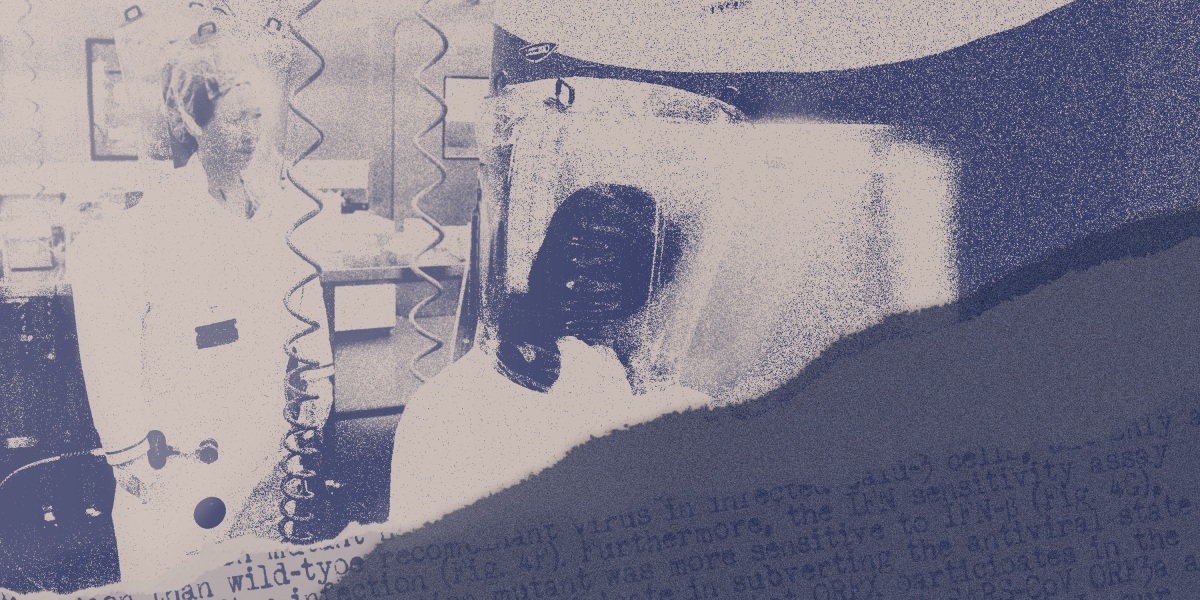Judicial Watch: Records Show Funding for EcoHealth/Wuhan Institute Research to Create Coronavirus ‘Mutants’

(Washington, DC) – Judicial Watch announced today it received 552 pages of records from the U.S. Department of Health and Human Services (HHS) which include the initial grant application and annual reports to the National Institutes of Health (NIH) from EcoHealth Alliance, describing the aim of its work with the Wuhan Institute of Virology in China to create mutant viruses “to better predict the capacity of our CoVs [coronaviruses] to infect people.”
Eco Health planned to sequence the spike protein from coronaviruses obtained from bats for the purpose of “creating mutants to identify how significantly each would need to evolve to use ACE2,” which is explained as “the receptor to gain entry to human cells.”
In the continuing discussion of the aims of the research, the report states:
On May 27, 2014, the NIH awarded EcoHealth Alliance $3,086,735 over five years for “Understanding the Risk of Bat Coronavirus Emergence.”
An EcoHealth Alliance grant application, received by the NIH on June 5, 2013, includes a list of “Senior/Key Personnel” including Shi Zhengli and Zhang Yun-Zhi of the Wuhan Institute of Virology (WIV); Peter Daszak, CEO of EcoHealth Alliance; and other Chinese scientists, including Ke Changwen of the Chinese “CDC and Prevention of Guangdong Province.”

Judicial Watch: Records Show Funding for EcoHealth/Wuhan Institute Research to Create Coronavirus ‘Mutants’ - Judicial Watch
(Washington, DC) – Judicial Watch announced today it received 552 pages of records from the U.S. Department of Health and Human Services (HHS) which include the initial grant application and annual reports to the National Institutes of Health (NIH) from EcoHealth Alliance, describing the aim of...
www.judicialwatch.org
(Washington, DC) – Judicial Watch announced today it received 552 pages of records from the U.S. Department of Health and Human Services (HHS) which include the initial grant application and annual reports to the National Institutes of Health (NIH) from EcoHealth Alliance, describing the aim of its work with the Wuhan Institute of Virology in China to create mutant viruses “to better predict the capacity of our CoVs [coronaviruses] to infect people.”
Eco Health planned to sequence the spike protein from coronaviruses obtained from bats for the purpose of “creating mutants to identify how significantly each would need to evolve to use ACE2,” which is explained as “the receptor to gain entry to human cells.”
In the continuing discussion of the aims of the research, the report states:
In vitro [outside the body] cell lines & Humanized mouse model: We have developed primary cell lines and transformed cell lines from 9 bat species using kidney, spleen, heart, brain and intestine. We have used these for virus isolation, infection assays and receptor molecule gene cloning. We also have a large number of cell lines from humans and animals that we will use for virus infectivity assays. We have obtained a letter of support from Dr Ralph Baric, who is keen to collaborate with us initially to infect his humanized mouse model with our bat SL-CoV [SARS-Like Coronavirus] that uses ACE2, and subsequently to use other CoVs that we identify …
EcoHealth Alliance’s $3.3 million grant to fund a project titled “Understanding the Risk of Coronavirus Emergence” was initially to run from October 1, 2013, to September 30, 2018. The first “Project/Performance Site Location” is the Wuhan Institute of Virology. Three other Chinese sites follow: East China Normal University in Shanghai, Yunnan Institute of Endemic Disease Control and Prevention in Dali, and the Center for Disease Control and Prevention of Guangdong in Guangzhou.On May 27, 2014, the NIH awarded EcoHealth Alliance $3,086,735 over five years for “Understanding the Risk of Bat Coronavirus Emergence.”
An EcoHealth Alliance grant application, received by the NIH on June 5, 2013, includes a list of “Senior/Key Personnel” including Shi Zhengli and Zhang Yun-Zhi of the Wuhan Institute of Virology (WIV); Peter Daszak, CEO of EcoHealth Alliance; and other Chinese scientists, including Ke Changwen of the Chinese “CDC and Prevention of Guangdong Province.”
Last edited:

